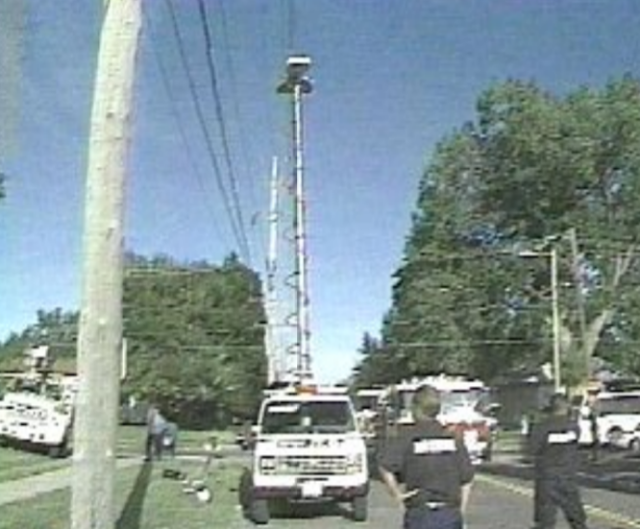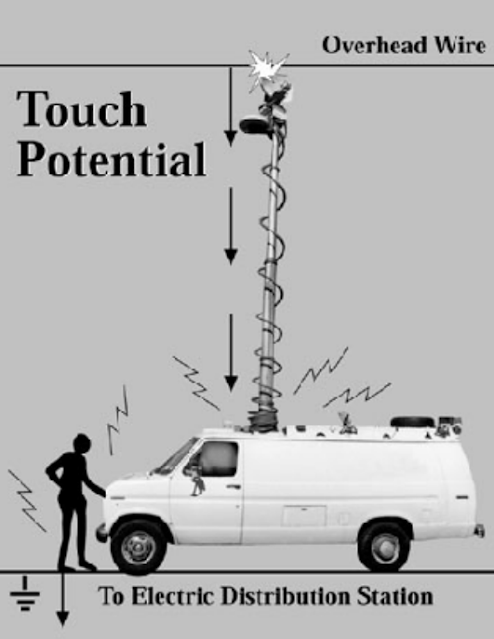What is Touch potential?
You often came across the term step and touch potential, but you never new what's all about. Grab it now.
Touch potential is the potential generated across a conductive body or object to the earth, when the conductive body contacts or touches a live wire. So, current flow through the conductive body from the live wire to the earth.
This can occur due to earth failure and inappropriate earthing in an installation. Other causes exist.
To illustrate this, we are going to see some common examples.
How touch potential is generated
1) A person touching a poorly earthed conductive part during earth failure. E.g touching the metallic part of towers, machines, etc during earth failure.
2) Live TV media antenna buses mistakenly touching live wires in transmission lines.
3) Excavators and lifters mistakenly touching a transmission line
Those are just some few examples of how touch potential is generated.
So, electrical technicians must be
ware of touch potential when working. Otherwise they may receive an electric shot and burns which can led to several damages and even death.
Related:
ware of touch potential when working. Otherwise they may receive an electric shot and burns which can led to several damages and even death.
Related:



